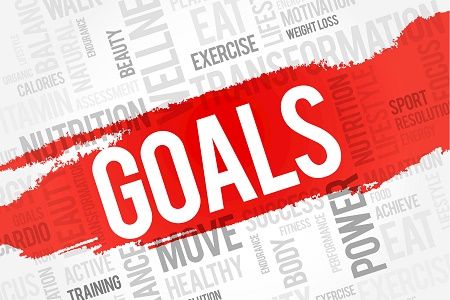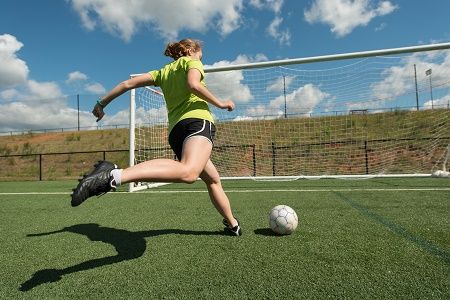11 Strategies to Turn Your Exercise Goals into Realities
Physical activity reduces stress, helps maintain a healthy body weight, improves cognitive ability, and does a number of other incredibly important things for the human body. But not everyone is excited about starting an exercise program. So how can you get inspired to move more?

Physical activity reduces stress, helps maintain a healthy body weight, improves cognitive ability, and does a number of other incredibly important things for the human body. But not everyone is excited about starting an exercise program. So how can you get inspired to move more?
The team over at Greatist.com interviewed their top trainers and experts on things they wish they knew before they became fitness gurus. They came up with a list of 11 tips for beginners to put fitness into perspective and to help motivate sedentary people to change their habits. Here we take a quick look at their advice.

It sounds like a simple question, but having someone ask themselves “Why do I want to exercise?” can be a powerful tool. Connecting exercise to a person’s purpose in life makes it easier to integrate into routines. Looking good is great for building confidence, but exercise can also help people stay active longer into their retirement, help increase energy to keep up with kids, and even enhance focus big projects. Finding a true purpose for exercise can keep you motivated long past swimsuit season.

As yoga instructor Julie Skaarup says, not doing yoga because you’re not flexible enough is “like saying ‘Oh, I can’t eat dinner now because I’m too hungry.’” Whether you want to improve your flexibility, learn how to use kettlebells, or increase your endurance, start by focusing on what you can do and what you want to be able to do. By finding a hurdle you’d like to get past, you’ll increase success and confidence!

Before beginning an exercise plan, it’s good to look at what hurdles have kept someone from being physically active. By identifying the ‘whys’ of avoiding exercise, these roadblocks can be channeled into 2 categories: excuses and true challenges. Real challenges, such as injuries, will have work-arounds. Excuses also have real-world solutions. By listing obstacles and solutions, adherence to a new healthy routine has a greater success.

By scheduling rest days as you would exercise days there’s less likelihood of falling out of routine. Bodies need to recuperate and recharge after exercise, and you can work with your physician to determine the right amount of rest their bodies need to help meet their goals. Also, physicians can give you guidance on signs their bodies need an extra day off or an “easy” day of workout. Instead of guessing and opting out, you will have fewer excuses to get their recommended physical activity.

Ah, accountability. The tool everyone knows they need but hates to use. Accountability is the pushup of routine; simple but effective. Tell someone about starting a workout routine, and by taking that big first step it increases the probability of following through. From Greatist, their expert athlete Terra Castro said, “The first step is putting it out there — being bold and believing you can do it. Take even a baby step.” Write it down, share it, and work toward it.

Saying you need to exercise to “get healthy” is not specific or measurable enough to inspire people to get moving. Use the SMART (Specific, Measurable, Attainable, Relevant, and Time-bound) system to set goals geared for getting healthier. Small positive changes add up into big results. Create goals like “I will go to water aerobics twice a week” or “I will work up to cycling 25 minutes straight by next month” will not only help you get going, but will help you set yourself up for success long-term.

Starting to exercise seriously means confronting what your body can and cannot do. For many people, when the initial enthusiasm wears out, this is the major roadblock to continuing to work towards those goals. Focusing on what you do well will prevent you from getting overwhelmed with all of the things you can’t do quite yet. Even simple things like taking a half hour for yourself or meeting new people at the gym will help encourage routine.

The treadmill is not for everyone. If you automatically associate exercise with the dread of crunchy-granola, chakra-cleansing yoga,or the mind-numbing tedium of being on an elliptical for 30 minutes, it’s time to consider something else. There are so many ways to get the recommended exercise in, from dancing the blues away to joining a kickball league to finding the right type of yoga. Not getting discouraged after trying a few different activities may be tough, but it’s worth it to find exercise that makes you feel good physically and mentally.

“Starting is everything,” said trainer Rob Sulaver to Greatist. Particularly in the beginning, just do something. With all of the “15 best ways to …” and “Top 8 things you’re not doing right” lists out there, it can be a jungle of information on how to exercise. But really, the right way to exercise is to just exercise. Find a mantra for when there is resistance, and just get out there and move. Only once you figure out what works, what you enjoy, and what your goals are should you put the extra effort into research.

Behavioral economists call it “temptation bundling,” but in the real world we call it bribery. Or incentivizing. Or whatever else you want to call rewarding yourself for completing a task, like working out. Setting up a reward for reaching goals will increase the likelihood of continuing with an exercise program. There are also plenty of apps out there, like Pact, that will not only reward you for fitness adherence, but also provide an online community for accountability and support. Not a bad deal.

Again, there is a lot of information out there to get lost in about fitness, diet, health … and trying to know it all before starting a regimen will derail you before you even get to the track. Sometimes we overthink tasks to avoid doing them. By avoiding the trap of overthinking, beginning to exercise will be easier. Get out there and walk or run or skip or box or dance… as a famous shoe marketing campaign once said, just do it.